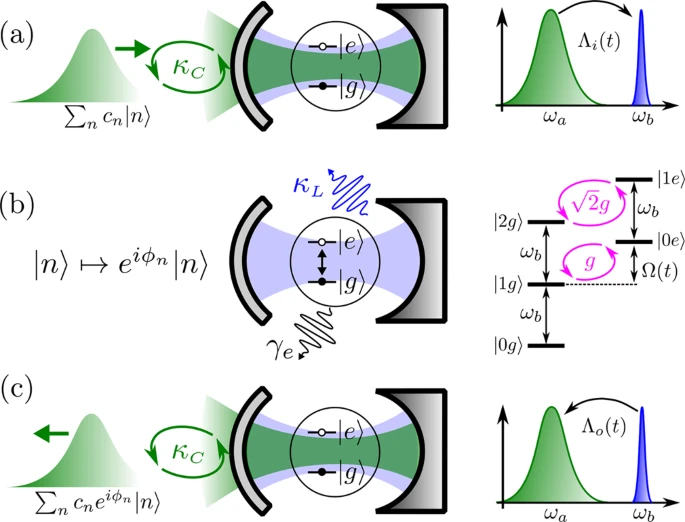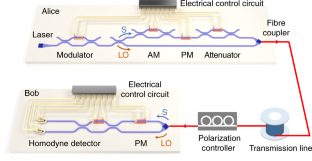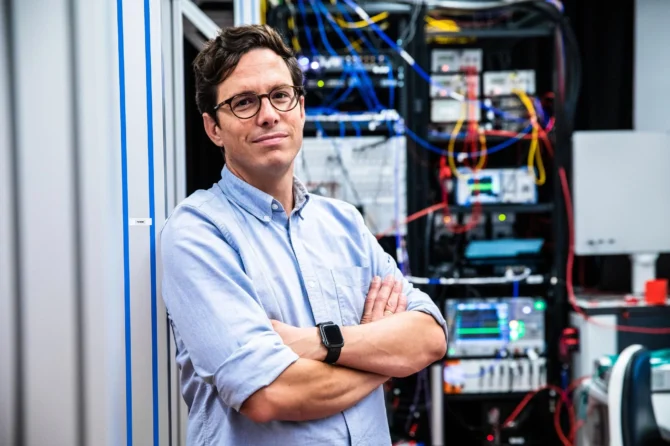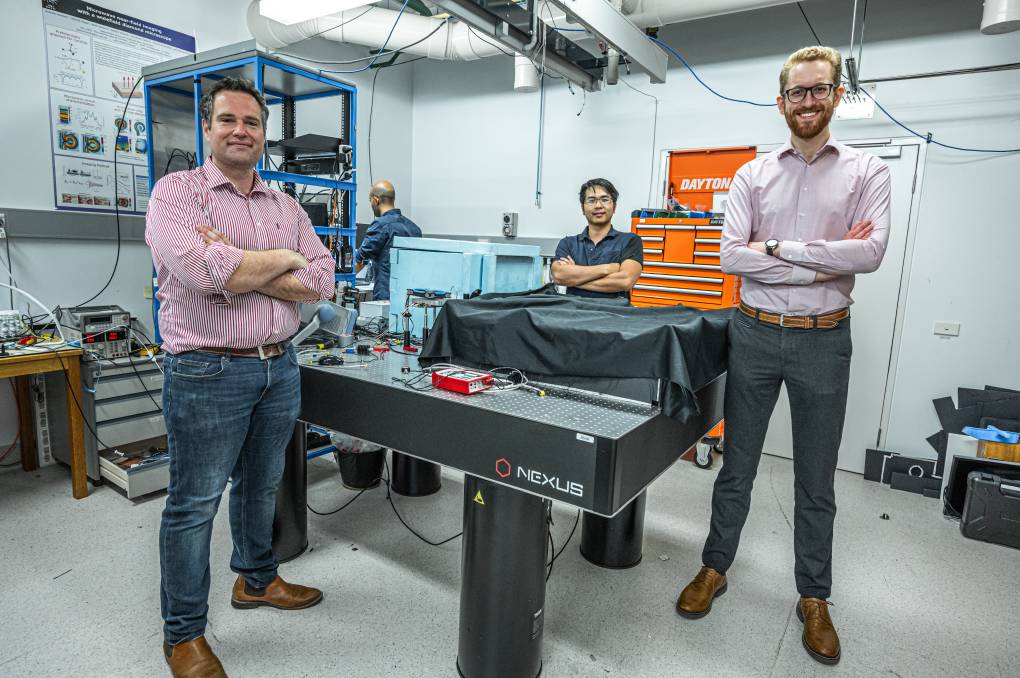A novel architecture has been proposed for implementing high-fidelity deterministic quantum logic gates using photonic qubits that are dual-rail encoded. The key innovation lies in the controlled interaction between photons and a two-level emitter (TLE) situated within an optical cavity. What makes this approach particularly noteworthy is its ability to preserve the photon wave packets that encode the quantum information even after they interact with the system.
The architecture achieves this preservation through a sophisticated quantum control process that involves two main mechanisms. First, it actively manages the loading and unloading of photons into and out of the cavity. Second, it dynamically modifies how strongly these photons couple with the two-level emitter. These control mechanisms are implemented through two distinct approaches: one utilizing nonlinear wave mixing between cavity modes (enhanced by strong external electromagnetic fields that can be modulated) and another leveraging AC Stark shifts to alter the transition energy of the two-level emitter.
The researchers conducted numerical studies to assess how well the system performs under real-world conditions. They specifically examined the impact of various imperfections that could affect the system’s performance, including loss and dephasing of the two-level emitter, as well as potential miscalibration of the control fields used to manage the interactions.
Based on their findings, the research team identified III-V quantum dots embedded in GaAs (gallium arsenide) membranes as a particularly promising platform for implementing this architecture. This material system appears well-suited for advancing photonic quantum information processing applications.
The significance of this research lies in its potential to advance the field of quantum computing by providing a reliable method for implementing quantum logic gates using photons as quantum bits. The architecture’s ability to maintain the integrity of quantum information while enabling controlled interactions between photons and matter represents an important step forward in developing practical quantum computing systems based on photonic qubits.
npj Quantum Information, Published online: 07 September 2022; doi:10.1038/s41534-022-00604-5





